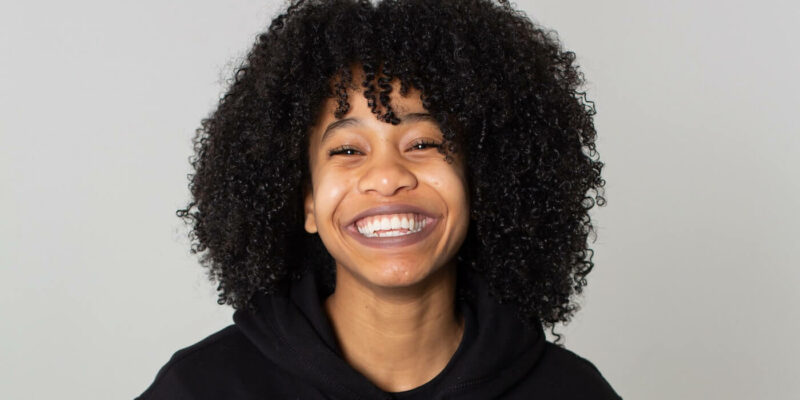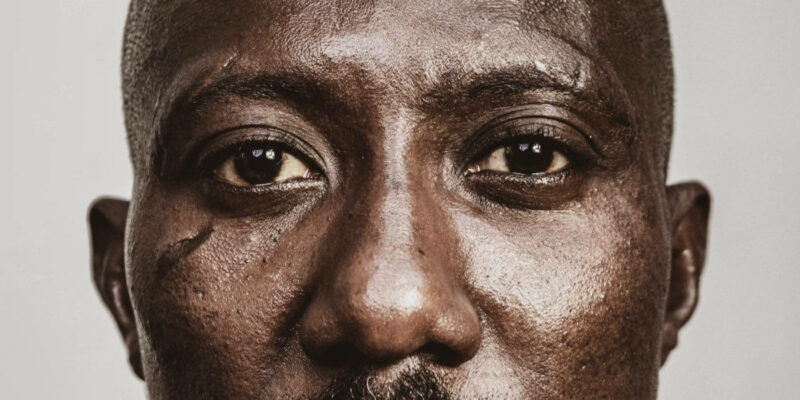Self-reflection is the habit of deliberately paying attention to your own thoughts, emotions, decisions, and behaviors.
Here’s a typical example:
During your commute home from work, you consider how the stress of your early morning meeting might have lead to residual anger and a poor decision with your boss at the end of the day. As a result, you resolve to take time after future stressful meetings to decompress rather than jump right back into your workday.
Most of us are capable of self-reflection like this. We periodically reflect back on an event and how we handled it in hopes that we learn something from it and make better decisions in the future. Obviously, we could all benefit from doing this kind of retrospective self-reflection more often.
But self-reflection becomes vastly more powerful when we can use it in real-time to make better decisions. It’s good to learn from past mistakes, but it’s far better to catch them in the moment or not make them in the first place.
For example:
In the middle of a difficult conversation with your spouse, you begin to notice a growing sense of defensiveness and pride, as if your mind is trying to shield you from attack. But you also bring to mind your goal of getting better at just listening without justifying yourself when taking feedback. Consequently, you successfully resist the urge to interrupt and you continue to listen empathetically.
How many failed marriages would still be going strong if we had a little bit more capacity for real-time self-reflection? How many high-potential businesses would be producing amazing work if their executives had 10% more capacity for real-time self-reflection?
The benefits of cultivating a greater capacity for self-awareness run wide and deep. And individuals who develop this capacity for real-time self-reflection have a huge advantage in both their personal and professional lives.
The key to real-time self-reflection is to cultivate it as a habit, a mental muscle that’s agile enough and strong enough to be deployed on the fly and at a moment’s notice.
How to Cultivate Real-Time Self-Reflection

In his book Mindsight, Dan Siegel uses the metaphor of a camera to explain self-reflection: the better the camera and clearer the lens, the more accurate the final photo will be. But as any good photographer will tell you, to get the clearest image possible, you must use a tripod to stabilize the camera and the lens, since even small vibrations and movements can distort the final image.
Most of us have the basic equipment for self-reflection—a decent camera and lens, so to speak. But to bring our powers of self-reflection to the next level we need to cultivate three specific skills that contribute to the habit of self-reflection: Openness, Observation, and Objectivity.
Like the legs of the tripod, these three independent but interconnected skills allow for optimal self-reflection, including the ability to self-reflect in real-time.
Let’s look at each of these advanced self-reflection skills and how we might work to cultivate them in ourselves.
1. Openness

Openness means the ability to see things for what they are, not what we think they should be. It means becoming aware of our own biases and stereotypes about the world, other people, or even ourselves, and working to overcome them.
What Openness Looks Like
I had a client who had been depressed for several years, ever since she started medical school. It didn’t take very long working with her and listening to her story for me to realize that she actually despised medical school and didn’t seem to have any genuine interest in becoming a doctor.
But she came from a family of doctors and a family culture that prized being a doctor over everything else. And while she had “known” that she was going to be a doctor for as long as she could remember, she couldn’t articulate much about why being a doctor was especially appealing or valuable to her.
Over the next few months, I worked with her to clarify what her beliefs and thoughts about becoming a doctor were and to look at where those beliefs had come from. As she discovered, most of her ideas about her career had been inherited from her family—especially her parents, both of whom were very successful doctors.
The more I asked her to think through and articulate what she really valued about medicine and a career as a physician, the more she became open to the realization that what she wanted, in this case, was really what her parents wanted. Once she realized the extent to which her inherited preferences and beliefs were guiding her thinking and decision-making, she began to see clearly for the first time that she didn’t really know what she wanted.
In the end, my client actually stayed in medical school. But her increasing openness to her own interests and values allowed her to shift her focus and specialty as she began to cultivate her own sense of what she wanted from her work and career. She began making decisions for herself rather than what she thought her parents would want or expect. As a result, not only did her depression lift, but she found herself enjoying her medical training and having a much brighter outlook on her future career.
How to Cultivate Openness with a Decision Journal
To cultivate openness, work on identifying your own default beliefs and rules about things, including yourself:
- What thoughts or self-talk run through your mind leading up to big decisions at work?
- What are your expectations for your spouse during times of conflict?
- What are your automatic or default explanations when you realize you’ve made a mistake?
A practical way to do this is to keep a decision journal. This can take a lot of different forms—Farnam Street has a nice article on decision journals, for example—but the basic idea is to create a routine that forces you to be aware of the factors influencing your decisions, including automatic beliefs, thoughts, expectations, and the degree to which these do or do not align with your own values and goals.
This can be as simple as spending 5 or 10 minutes doing some journaling and free-writing a day or two before a big decision and then again a few days after you’ve made the decision.
By forcing yourself to notice the subtle biases and beliefs that influence your thinking, you’ll be training yourself to see things clearly and as they are.
2. Observation

Observation is the ability to watch your self in the same way you watch external events—with perspective and distance. Sometimes referred to as meta-cognition, this skill is especially helpful for using self-reflection as a way to overcome compulsive, addictive or habitual behaviors.
What Observation Looks Like
One of the most puzzling forms of addiction I’ve ever encountered came from a client of mine who was a senior vice-president at a large management consultancy firm.
My client opened our first session together explaining that she thought she was “addicted to saying yes.” She went on to describe how she found it difficult to turn down any request of her at work. And as the leader of a large team, she was bombarded by requests all day long, both from the people she managed and her bosses on the executive team.
The real problem, she explained, was that, in addition to being chronically stressed and overwhelmed, she was falling further and further behind in her work. Important new projects were getting delayed because she spent so much time “putting out other people’s fires.”
She went on to describe how she knew she needed to get better at saying no, but whenever she tried, she felt terrified and ended up “caving” at the last minute.
What immediately struck me about this client was how incisive, clear-thinking, and perceptive she was in how she explained most things to me and spoke about her work; but at the same time, how unclear she was about why she had such a hard time saying no. Beyond, “I feel terrified,” she had no idea what was happening in those decisive moments of compulsively saying yes to new requests and tasks at work.
I realized she struggled profoundly to observe what was happening in her own mind. And as a result, she kept going with this habitual behavior of saying yes.
I introduced my client to the idea of mindfulness meditation. While she was initially hesitant to try it, as it sounded “a little too woo-woo” for her, she bought into it when I explained it like this:
I think the reason you keep saying yes despite not wanting to, is that there are things happening in your mind—thoughts and emotions, specifically—that you’re not aware of. And these inner forces are “pushing you” toward that same unhelpful response. But, if you can become more clear on what exactly is happening in your mind in those moments, you may be able to better resist that initial impulse and choose something different. Mindfulness is just a direct way to practice observing what’s going on in our minds.
This explanation seemed to work for her and so we got started. Over the course of a few weeks, my client gradually improved in her ability to “watch” her own mind, including what kinds of quick, habitual thoughts and emotions tended to pop up in different circumstances.
Eventually, she realized that the reason she was feeling so terrified whenever someone made a request of her, was that she was anxious that people would think she was lazy and unkind if she were to say no. She discovered a whole set of unhelpful thinking patterns and self-talk scripts about what other people might be thinking of her that were leading to a burst of intense negative emotions, including anxiety and anticipatory guilt.
As she got better at observing these mental scripts and emotions play out, she got better at acknowledging them for what they were—simple habits—and at learning she could tolerate them without having to act on them, which is exactly the reason she kept saying yes so often. Mindfulness opened up space to identify her own thoughts and emotions, and then either tolerate them or modify them to be more realistic and accurate.
In the end, she found that while saying no was still difficult, it became increasingly doable the better she became at observing her own thoughts and emotions, in large part thanks to her mindfulness practice.
How to Cultivate Observation with a Mindfulness Practice
Mindfulness meditation is the best exercise I know for improving your ability to manage your attention—that is, to skillfully choose what you want to pay attention to and what you don’t.
In stressful, anxiety-producing situations, your mind is primed to focus outward onto what’s happening in the world or into the hypothetical world of what if…?. But as the example above illustrates, if we tend to habitually make poor decisions or choose unhelpful behaviors during times of stress, the key is to be able to turn our attention inward and better understand what factors are really driving our choices and behaviors.
Real-time self-reflection requires that we be able to briefly shift our attention away from what’s happening outside and instead observe what’s happening inside. A mindfulness meditation practice is the best way to strengthen that muscle.
3. Objectivity

Objectivity is the ability to separate your thoughts, feelings, and behaviors from your identity and sense of self. Of course what you think, how you feel, and the behaviors you engage in are a part of who you are, but they don’t encompass all of who you are.
What Objectivity Looks Like
A recent client of mine came to therapy because he struggled with intrusive morbid thoughts: He would spontaneously imagine driving off the road and everyone in the car being killed, for example. Another especially terrifying thought that he had recurrently was that he was sleepwalking and hurting people in the middle of the night without knowing it.
As you might imagine, he experienced a lot of anxiety as a result of these thoughts. So much so that he was having a hard time staying focused at work, couldn’t enjoy normal family activities, and was even developing a significant insomnia problem because he was afraid to go to sleep.
What my client didn’t know until our work together is that intrusive thoughts, even intrusive morbid thoughts like he was having, are actually pretty common. Most people experience them at least occasionally. They had become so intense, so frequent, and so destructive in is life because of how he viewed them.
Specifically, my client explained that the first time he had a thought about driving off the road and killing his family, the next thought that followed immediately after was: “Oh my God, am I going crazy?” In other words, he interpreted his “crazy” thought as meaning that he was crazy. It’s a subtle distinction but it makes all the difference.
Because my client believed that having “crazy” thoughts meant that there was something wrong with him and that he was somehow more likely to do something awful because of them, he became increasingly afraid of his own thoughts. And as a result, he developed all sorts of habits and strategies to try to avoid or push out these thoughts when they came up.
Of course, thought suppression doesn’t work, and in fact, it tends to have the opposite effect of increasing both the frequency and intensity of the thoughts we try to suppress, which is why my client’s intrusive thoughts kept getting worse and more frequent.
In addition to educating my client about the nature of thoughts, even morbid ones like he was experiencing, I also helped him to practice the skill of separating his thoughts from his sense of self. We practiced a technique called Cognitive Restructuring, which involves learning to observe and question our thoughts and then generate alternative ones as well.
As a result, my client gradually began to change his beliefs about the nature of thoughts and what they meant. Specifically, he increasingly understood that thoughts are just thoughts. They don’t necessarily mean anything. And while they can sometimes be true and helpful, they can just as often be completely false and unhelpful.
So, rather than assuming our thoughts are always meaningful, correct, and a prophetic signal of who we are, it’s better to see them as an interesting part of us, worth looking at and acknowledging but never treating as gospel.
How to Cultivate Objectivity with a Thought Diary
While you may not be struggling with intrusive morbid thoughts like my client above, we all struggle at times to separate our thoughts and feelings from who we are. Consequently, both our mood and performance can suffer.
To improve your ability to be more objective with the contents of your own mind, you can practice using a thought diary.
A thought diary is a simple technique for slowing yourself down in emotionally-intense situations and identifying the relationship between your thoughts and emotion. Then you can try to restate your thoughts to be more realistic and/or generate new thoughts. When you get in the habit of doing this, it reinforces the belief that our thoughts are, in fact, just thoughts—part of us, but by no means all of us.
All You Need to Know
Self-Reflection is the ability to pay attention to your own thoughts, emotions, decisions, and behaviors. While it’s good to be self-reflective about what happened in the past, it’s better to be able to use self-reflection in real-time to improve your decisions and behavior.
There are three skills which can be practiced and will lead to better self-reflection, especially in the moment:
- Openness. Openness means becoming aware of and free from inherited beliefs and stereotypes about the world or ourselves, and instead, learning to see things as they are. A decision journal is a good way to cultivate openness.
- Observation. Observation is the ability to watch yourself and your own mind in the same way you watch external events—with distance and perspective. Mindfulness meditation is the best way to cultivate this skill.
- Objectivity. Objectivity means the understanding that we are more than the contents of our minds—thoughts, emotions, desires, etc. Keeping a Thought Diary is a helpful way to reinforce this understanding.





7 Comments
Add YoursI was particularly challenged by two skills: observation and objectiveness. I do a lot of things just to avoid certain impressions people might have of me. This, in most cases, usually leaves me anxious. Also,I didn’t understand the science of separating my morbid thoughts from my real self. Even though I have never hid to such morbid thoughts, they usually leave me questioning my sanity (on a lighter note) and scared at times. Now I know. “My people perish because of lack of knowledge”. Indeed,Knowledge is light. Thank you for giving light, Nick
Gald it was helpful, Ngeh. Thanks for your note 🙂
Nick,
I’m very glad to have made your ‘acquaintance’ at Medium.
As i see here, you have provided a never ending source of deep-reading and reflection.
Thank you for everything you’ve written.
Same, AJ! Thanks for reading!
Thank you so much for your articles !! They are such a helpful source 🙂
A very interesting article. Enjoyed reading it
Wow, this is awesome. Thanks for this. Best thing I’ve stumbled upon in quite some time and very applicable to my current world.